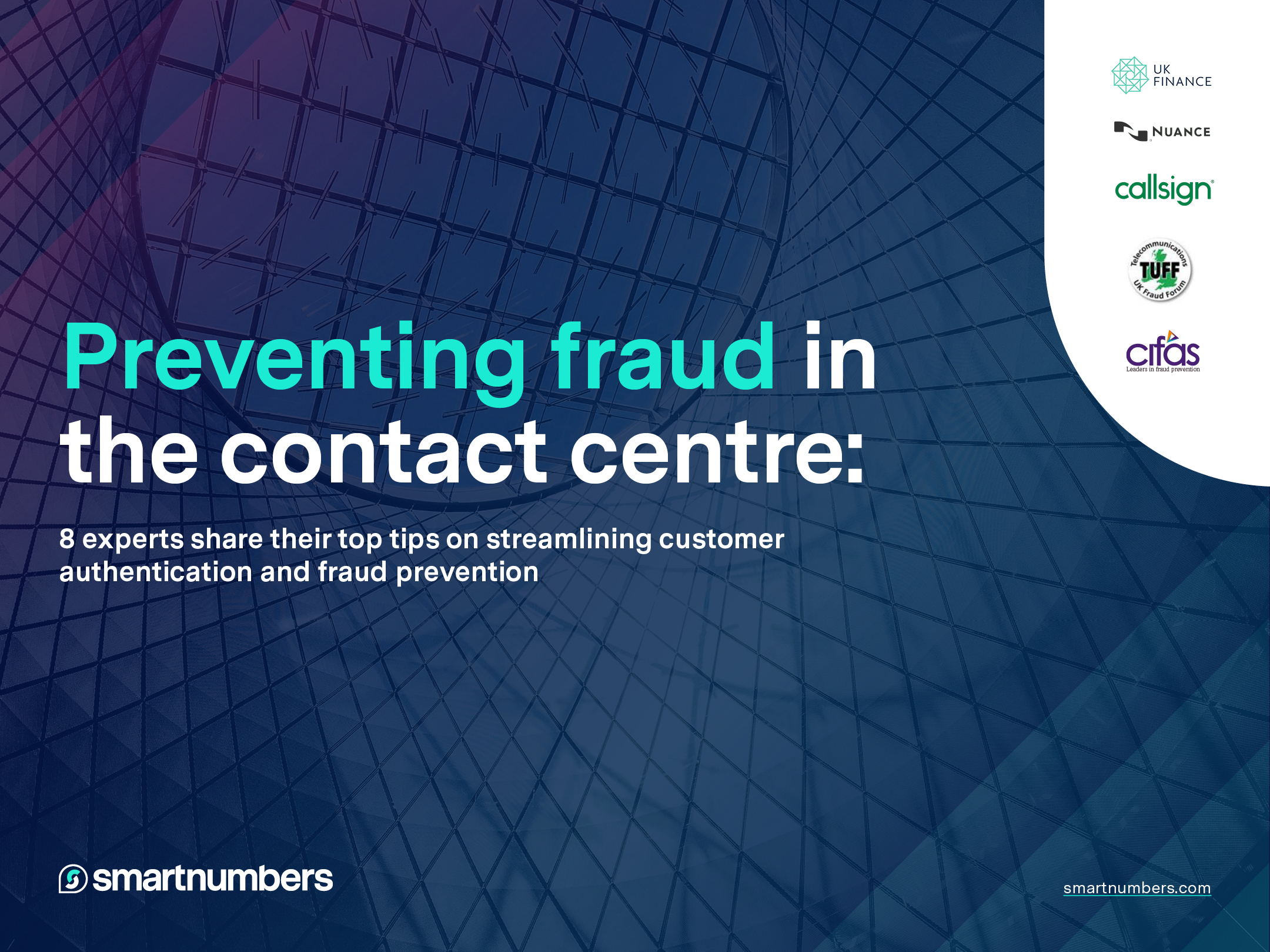Over the past few years, technology like multi-factor and biometric authentication has become the standard for digital channels. But for contact centres, long-winded IVR menus and cumbersome security questions remain the norm. Unfortunately, this has become a real source of frustration for customers.
We spoke with Chris Wade, one of our Product Managers to understand the reasons for this and discuss how organisations can provide better experiences for customers while preventing fraud.
Grant White, Smartnumbers: Thanks for taking the time to speak to us Chris. Given the advancements in digital security and how it’s improved customers’ online experience, how has that affected the contact centre?
Chris Wade, Smartnumbers: Currently, the biggest challenge contact centres face is how to create a smooth customer experience while preventing fraud. Fraud cases have increased by 13%, according to the National Fraud Database, so organisations have responded by adding more and more questions to their identification and verification (IDV) process. But this can lengthen the average call duration, cost the business more money and negatively impact the customer experience.
Also, the contact centre is typically the last step customers take when looking to resolve their query. According to recent research, 20% of contact centres state that more than 1 in 4 calls are from customers that have failed to find an answer on the website and approach the call already frustrated. So, long wait times and cumbersome security questions just add to their frustration and impact the customer experience.
The solution is to find a way of simplifying caller authentication and improving the customer experience while making it harder for fraudsters to access customer accounts.
GW: Completely agree, why are contact centres such an attractive target to fraudsters?
CW: Digital channels like web and mobile apps have become much more secure in recent years thanks to intelligent authentication practices based on things like fingerprint technology, facial recognition and device ID. But there isn’t an equivalent approach to security for the telephony channel.
Also, as data breaches continue to rise, fraudsters are now armed with more information than ever to bypass simple knowledge-based authentication (KBA) checks. Fraudsters exploit this vulnerability and increasingly use the contact centre to gather information and set-up or execute an attack. In fact, more than 60% of all fraud attacks touch the contact centre at some stage.
For example, a fraudster might use the IVR to validate customer information such as recent transactions, which is then used to conduct fraud through other channels.
GW: Obviously, the key is to get the right balance between too secure and too customer experience focused, how can contact centres achieve this balance?
CW: Firstly, if we look at some of the current authentication tools: it’s clear that KBAs are becoming increasingly ineffective. And while voice biometrics is taking the lead in secure verification, it’s less effective as a tool on its own for customer segments that rarely call in. So instead, organisations should consider a multi-layered defence.
For example, by combining call signalling analysis and voice biometrics, organisations can elevate the trust level of a call enabling more self-service transactions to be completed in the IVR. And if a call does need to be escalated, trusted callers can enjoy a faster track through authentication and have their enquiry resolved quickly.
This results in reduced costs and shorter average handling time (AHT) by approximately 20 seconds per call. Overall, this increases customer satisfaction, while still preventing fraud.
GW: Can you tell us how call signalling analysis works and how it helps organisations deliver seamless customer authentication?
CW: At Smartnumbers, we verify the caller’s authenticity using our patented Call DNA technology.
Smartnumbers examines more than 200 features of the call signalling to determine the trust level of each call. This enables us to confirm a caller is calling from the number they claim to be using and not spoofing the call. We also analyse suspicious behaviour such as repeat calls, especially from withheld numbers.
This enables organisations to divert high risk calls to a specialist team or prompt the agent to ask an additional set of security questions. So, genuine customers can be authenticated much quicker and agents can spend more time helping them with their query.
If you combine call signalling analysis with other authentication factors such as voice biometrics, you can enable more self-service transactions through the IVR and reduce the number of calls that need to be answered by agents.
It’s a win win for everyone.
GW: Thanks for your time Chris and for providing some great insight and advice. It’s been a pleasure chatting with you.
For more information on how to streamline authentication and prevent fraud in the contact centre please download our eBook.



